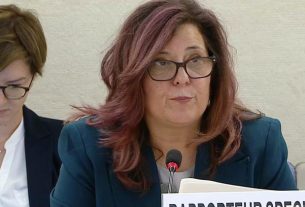Each day, we’re confronted with headlines about death: millions lost to disease, disasters, overwork or unhealthy lifestyles. But much of this reporting doesn’t reflect reality – and it may be doing more harm than good.
Journalism is meant to help the public make sense of health risks. But the way media outlets report death often distorts our understanding of what’s actually killing people. Dramatic causes like terrorism, pandemics and natural disasters receive disproportionate attention, while chronic illnesses such as heart disease, kidney disease and stroke – the world’s biggest killers are underreported or ignored.
This matters. Public perceptions of risk shape everything from government health spending and research priorities to individual behaviour and policy responses.
A large body of research suggests that people consistently overestimate the risk of rare or sensational causes of death and underestimate common ones. A 2014 study found that people were far more likely to think of deaths from suicide, homicide, or air crashes than from stroke, diabetes or chronic respiratory disease — even though the latter are far more common.
These misperceptions closely mirror media coverage. A comparative content analysis of UK, US and Australian newspapers found that cancer, aviation accidents and violent crime were disproportionately represented, while leading causes of death like heart disease received relatively little attention.
Pandemics tend to dominate headlines, especially when early estimates or modelling studies are reported without context. One example is the widely shared claim that overwork causes 2.8 million deaths a year. The original report from the World Health Organization and International Labour Organization put the figure closer to 745,000 – a significant number, but one that became inflated as it was repeated across headlines and outlets.
Meanwhile, major killers such as kidney disease, lower respiratory infections, and hepatitis C barely register in news cycles.
This gap between coverage and reality – known as the perception gap – shapes how people think, feel and act. Research shows the public tends to panic over rare events while ignoring everyday risks. For instance, someone might worry about dying in a plane crash (an exceedingly rare event), while overlooking high blood pressure — which contributes to more than 8.5 million deaths each year.
Why the media gets death wrong
Journalists often focus on stories with novelty, controversy or emotional impact. Cancer and heart disease are common, but overwork or climate-related deaths feel more urgent or politically relevant. New research or modelling studies also tend to get picked up quickly, especially when they come with a striking number or bold claim.
Reporters frequently rely on press releases and preprints, which may present tentative findings as hard facts. Mortality statistics are also often shared without context. For example, an article might claim “high blood pressure causes 10 million deaths a year” – without explaining that this figure includes associated risks and overlaps with other conditions.
Another issue is how deaths are categorised. Especially among older adults, a single death may involve multiple conditions like diabetes, cardiovascular disease and respiratory illness. Media reports rarely account for these comorbidities, which means the same death might be counted under several causes across different articles further inflating the apparent death toll.
The result isn’t usually intentional misinformation – but the impact can still be deeply misleading.
What responsible reporting looks like
To improve public understanding and avoid unnecessary alarm, media outlets should adopt three core principles:
1. Provide context
Always relate a figure to the global picture. For instance, around 295,000 people drown each year – a tragic number, but just 0.5% of global deaths. Without this kind of framing, it’s easy for even modest risks to feel overwhelming.
2. Clarify cause v correlation
There’s a critical difference between saying “X causes Y” and “X is associated with Y.” For example, ice cream sales and sunburns tend to rise together – not because one causes the other, but because both are linked to summer weather. Precision in language matters: unless a direct causal link has been firmly established, it’s more accurate to describe a risk as “associated with” a particular outcome.
3. Avoid sensationalism
In a crowded news landscape, it’s tempting to chase clicks – but public trust relies on accuracy. Exaggeration undermines credibility, especially in health journalism.
What readers can do
It’s not just journalists who shape the narrative – readers do too. When you see a health statistic:
-
ask whether it comes from a reputable source like the WHO, UN, or IHME
-
check whether the figure is put in context or presented in isolation
-
look for signs of double-counting, exaggeration or causal overreach
-
be cautious with headlines that include words like “explosion,” “soar” or “epidemic” without numbers to back them up.
Death is a serious subject but our understanding of it shouldn’t be shaped by exaggeration. With better reporting and more critical reading, we can build a clearer picture of global health and respond to real risks, not just frightening headlines.



